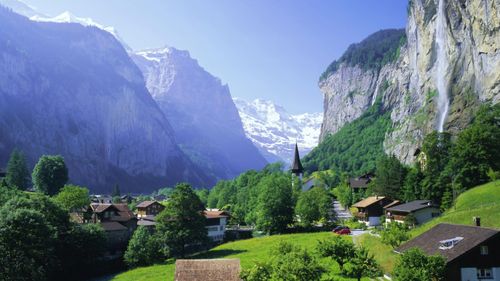The Intersection of Biology and Culture in Human Evolution
Human evolution has long puzzled scientists, scholars, and even ordinary individuals. How did we humans come into existence, how did we evolve, and what were the factors that played a key role in shaping our evolution? While genetics and biology may provide some answers, culture has also played a crucial role in our evolution, and the intersection of biology and culture has helped shape our modern-day society. Let’s explore how the two have intertwined in human evolution.
Biological Evolution
Biological evolution is the process by which species change over time, and new ones develop from existing ones. The principle of natural selection, proposed by Charles Darwin, has played a fundamental role in shaping our understanding of biological evolution. Adapting to the environment and passing on favorable traits to subsequent generations are some of the key mechanisms by which species evolve.
In human evolution, biological factors have played a substantial role, primarily in shaping the physical traits of humans. For instance, an increase in brain size and the development of bipedalism, or walking on two legs, are significant features that distinguish humans from other primates. Furthermore, evidence suggests that our diet has also played a crucial role in shaping our evolution.
Cultural Evolution
While biological evolution has been integral to human evolution, cultural evolution has played a significant role in shaping humans’ collective behavior. Culture refers to the traits or learned behaviors that individuals acquire from their environment and social interactions. The cultural transmission of information from generation to generation, known as cultural evolution, can shape how a society operates and how it adapts to changes in the environment.
Language is one of the most prominent examples of cultural evolution in human evolution. As humans developed language, they were able to transmit information across generations with more precision, allowing for more complex societies to emerge. Furthermore, cultural evolution has been instrumental in the development of social norms and customs, such as religion and marriage. These social institutions have helped humans create shared beliefs and values, further shaping our evolution.
The Intersection of Biology and Culture
The intersection of biology and culture is where things get interesting. While biological evolution has shaped physical traits, cultural evolution has played a significant role in shaping our behavior. For example, our dietary habits, which have evolved over time, have shaped our physical features, such as our teeth and digestive system.
Furthermore, the development of societies and cultural transmission has had a significant impact on the spread of disease. The advent of agriculture, for instance, brought humans into close contact with domesticated animals, making it easier for diseases to jump from animals to humans. Cultural practices, such as burying the dead, have also played a role in the spread of disease. Understanding the intersection of biology and culture is vital for public health, as it can help prevent the spread of diseases and inform future public health policies.
Conclusion
The intersection of biology and culture has played a vital role in human evolution, shaping physical traits and behavioral patterns. Biological evolution has helped create the physical features that distinguish us from other primates, while cultural evolution has shaped our societies and behavior. Understanding the intersection of biology and culture is essential for understanding the complex nature of humans and how we have evolved over time.
(Note: Do you have knowledge or insights to share? Unlock new opportunities and expand your reach by joining our authors team. Click Registration to join us and share your expertise with our readers.)
Speech tips:
Please note that any statements involving politics will not be approved.
